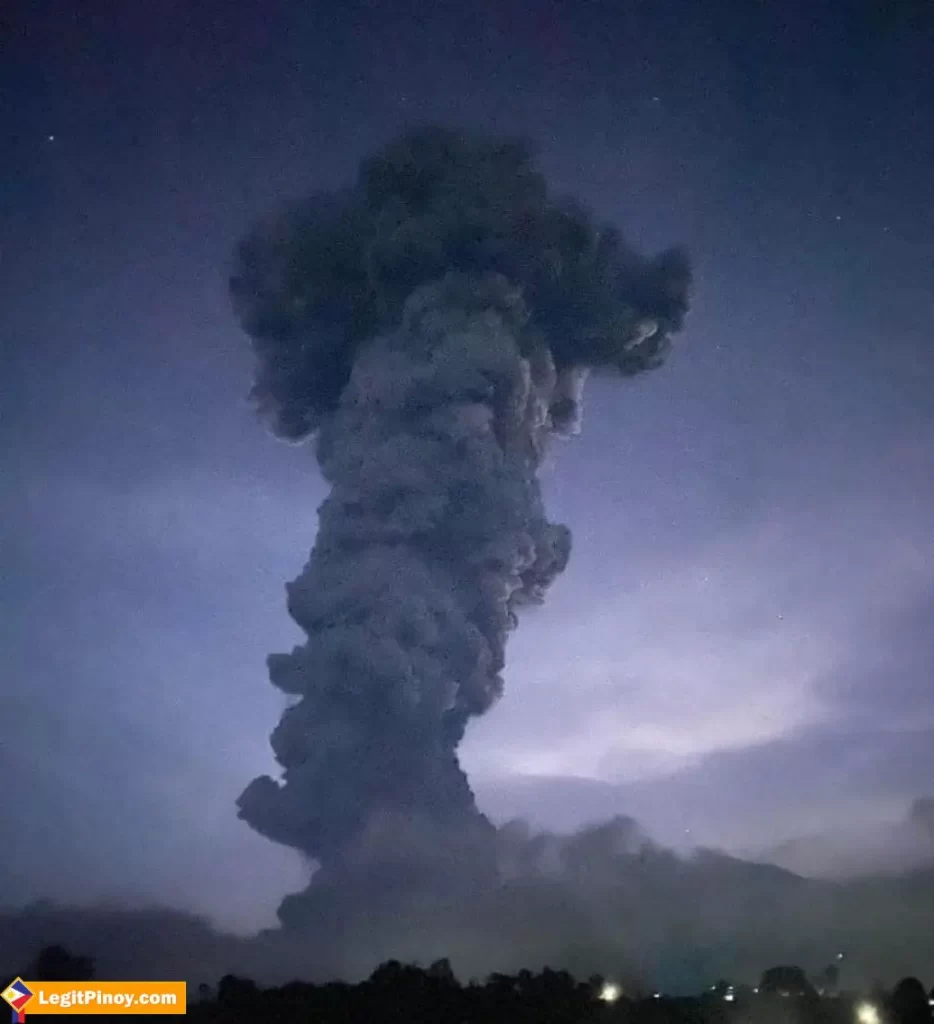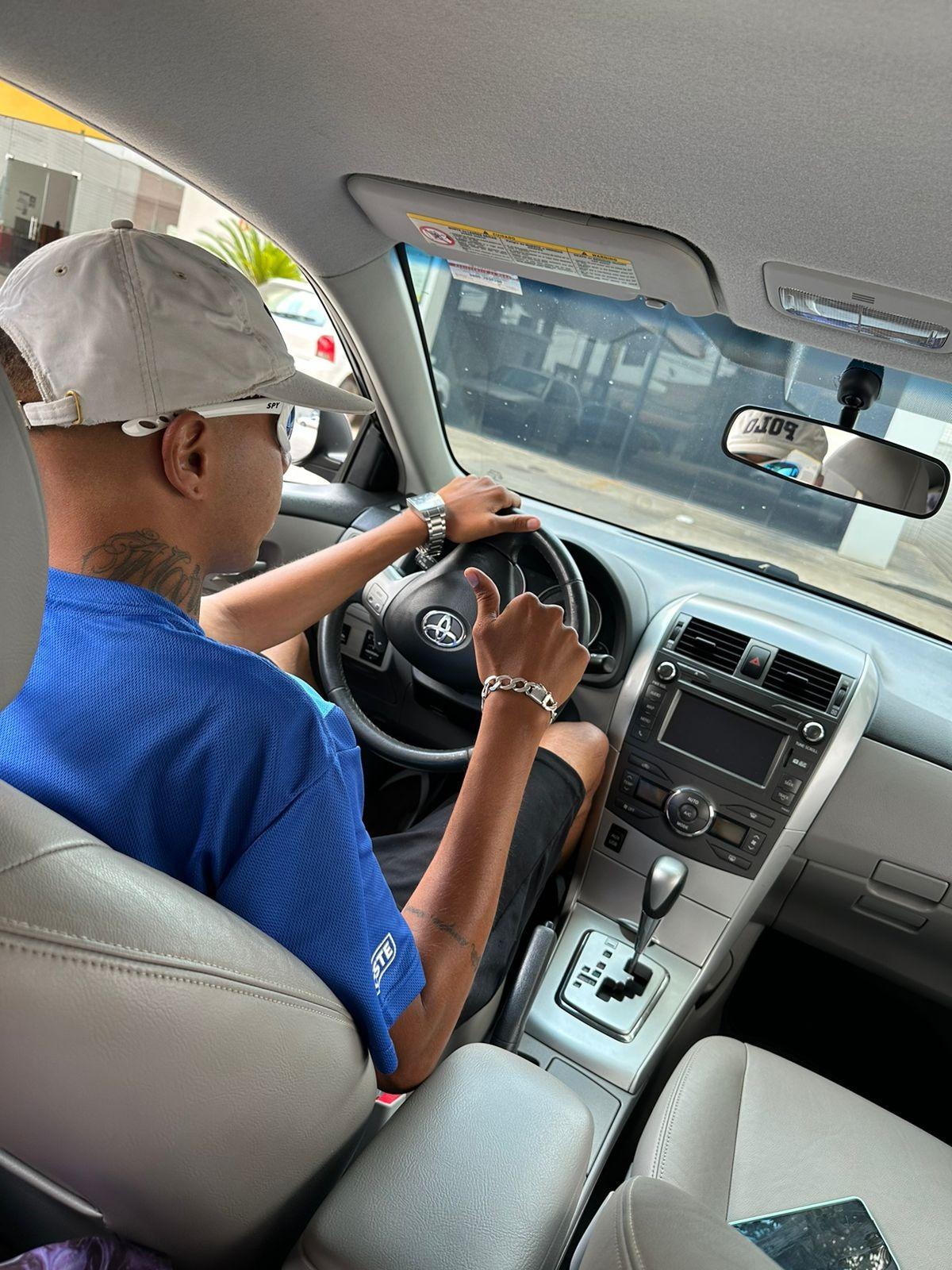
Breaking News: Kanlaon Volcano Erupts in the Philippines – June 3, 2024

Kanlaon Volcano in Negros Occidental and Negros Oriental is emitting plumes that rose to 5,000 meters, the Philippine Institute of Volcanology and Seismology.
Ads



Sponsored by:


Table of Contents

Introduction
Today, June 3, 2024, the Kanlaon Volcano, one of the Philippines’ most active and historically significant volcanoes, has erupted. The eruption began at approximately 10:30 AM local time, sending towering plumes of ash and smoke into the atmosphere and causing widespread concern among residents and authorities alike. This article delves into the immediate impact, historical context, scientific insights, and human stories surrounding this dramatic event.
The Immediate Impact
Initial Eruption and Response
At 6:51pm, the peaceful evening on Negros Island was shattered by a massive explosion from Kanlaon Volcano. The eruption sent ash and smoke billowing up to several kilometers into the sky. The Philippine Institute of Volcanology and Seismology (PHIVOLCS) quickly raised the alert level to 3, signaling a significant increase in volcanic activity with potential for more hazardous eruptions.
Local authorities swiftly mobilized emergency response teams to assist in evacuating residents within a 10-kilometer radius of the volcano. This precautionary measure aimed to protect people from the dangers of pyroclastic flows, ashfall, and potential lava flows. Schools, businesses, and local air traffic were temporarily halted to ensure public safety.
Community Reactions and Evacuations
Residents’ Experiences
The eruption of Kanlaon Volcano has deeply impacted the lives of thousands of people. Families in affected areas have been hurriedly packing essentials and moving to safer locations. The sense of urgency and fear is palpable as people recount their experiences.
Maria Santos, a resident of La Carlota City, shared her harrowing experience. “We heard a loud bang, and then the ground shook. When we looked outside, there was a huge column of ash rising into the sky. My first thought was to get my children to safety,” she said, tears in her eyes. Maria and her family are now staying at an evacuation center set up by the local government.
Evacuation centers have been established in nearby towns and cities to accommodate those displaced by the eruption. These centers are providing basic necessities such as food, water, and medical care. The sense of community and support is strong as neighbors and strangers come together to help each other through this crisis.
Government and Emergency Response
The government’s response to the eruption has been swift and organized. President Rodrigo Duterte has assured the public that all necessary resources are being mobilized to ensure the safety and well-being of those affected. In a press conference, he stated, “The safety of our people is our top priority. We are working closely with local authorities and PHIVOLCS to monitor the situation and provide assistance where needed.”
Emergency response teams, including the military and local disaster response units, have been deployed to assist with evacuations and provide aid. Health officials are also on high alert, advising residents to wear masks to protect themselves from the ashfall and to stay indoors as much as possible.
Historical Context of Kanlaon Volcano
Previous Eruptions and Impact
Kanlaon Volcano, located on Negros Island, is one of the most active volcanoes in the Philippines. Its history of eruptions dates back centuries, with records of significant eruptions causing widespread damage and loss of life. The most notable eruptions in recent history occurred in 1996 and 2006, both of which led to evacuations and temporary disruptions in the region.
The volcano’s frequent activity has made it a subject of continuous study by volcanologists. Understanding the patterns and triggers of Kanlaon’s eruptions is crucial for predicting future events and mitigating their impact on local communities.
Cultural and Economic Significance
Kanlaon is not just a natural hazard; it is also a significant part of the cultural and economic landscape of Negros Island. The volcano is revered in local folklore and mythology, often depicted as a powerful deity. It is also a popular destination for tourists and adventurers who are drawn to its challenging hiking trails and stunning vistas.
Economically, the fertile soil around Kanlaon supports agriculture, particularly sugarcane and other crops. However, the frequent eruptions pose a constant threat to these livelihoods, with ashfall and lava flows potentially devastating farmland and infrastructure.
Scientific Insights into the Eruption
Understanding Volcanic Activity
The eruption of Kanlaon Volcano provides an important opportunity for scientists to study volcanic activity and improve predictive models. PHIVOLCS and international volcanology experts are closely monitoring the volcano, using a combination of ground-based sensors, satellite imagery, and drone technology to gather data.
Dr. Renato Solidum, a leading volcanologist at PHIVOLCS, explained the significance of the current eruption. “Each eruption teaches us more about the behavior of the volcano. By studying the composition of the ash and gases emitted, we can learn about the magma’s source and movement within the earth. This helps us refine our models and improve our ability to forecast future eruptions.”
Technology and Monitoring
Modern technology plays a crucial role in monitoring and understanding volcanic eruptions. Seismic sensors detect tremors and vibrations within the volcano, providing early warning signs of impending eruptions. Satellite imagery allows scientists to observe changes in the volcano’s shape and heat emissions, while drones provide close-up views of the crater and ash plume.
These technological advancements have greatly improved our ability to predict and respond to volcanic eruptions. In the case of Kanlaon, the data collected during this eruption will contribute to a better understanding of the volcano’s behavior and help improve safety measures for future events.
The Human Story: Resilience and Hope
Personal Accounts from the Affected
The eruption of Kanlaon Volcano has brought out stories of resilience and hope among the affected communities. Despite the fear and uncertainty, many people are showing remarkable strength and solidarity.
Jose Ramirez, a farmer from the foothills of Kanlaon, shared his determination to rebuild. “This is not the first time we have faced the wrath of Kanlaon. Each time, we pick up the pieces and start again. Our community is strong, and we will get through this together,” he said.
Volunteers from across the region have come forward to help, providing food, clothing, and emotional support to those displaced by the eruption. The spirit of bayanihan, a Filipino term for communal unity and cooperation, is evident as people come together to support one another.
Aid and Support Efforts
Non-governmental organizations (NGOs), international aid agencies, and local charities have also mobilized to provide assistance. Relief efforts are focused on ensuring that evacuees have access to clean water, food, medical care, and mental health support.
The Red Cross has set up medical tents at evacuation centers, while international aid organizations are coordinating with local authorities to distribute relief supplies. Psychologists and counselors are also on hand to provide emotional support to those traumatized by the eruption.
Environmental Impact
Ashfall and Air Quality
The eruption of Kanlaon Volcano has had a significant impact on the environment. Ashfall has blanketed several towns and cities, causing concerns about air quality and health. Residents are being urged to wear masks and avoid outdoor activities to minimize exposure to harmful particles.
Ash from volcanic eruptions can have serious health implications, particularly for individuals with respiratory conditions such as asthma. It can also contaminate water sources and damage crops, posing long-term challenges for affected communities.
Long-Term Ecological Effects
Beyond the immediate impact, volcanic eruptions can have long-term ecological effects. The deposition of volcanic ash can alter soil composition, affecting plant growth and agriculture. However, volcanic ash also contains minerals that can eventually enrich the soil, promoting new plant life.
The eruption has also affected wildlife in the region. Birds and animals have been displaced, and the local ecosystem will need time to recover. Scientists will continue to monitor the environmental impact of the eruption to understand its full extent.
Moving Forward: Recovery and Preparedness
Rebuilding Communities
In the aftermath of the eruption, the focus will shift to rebuilding and recovery. This will involve restoring damaged infrastructure, providing financial support to affected families, and helping farmers rehabilitate their land.
Government agencies, NGOs, and international partners will play a crucial role in the recovery process. Efforts will be made to ensure that rebuilding is done in a way that increases resilience to future volcanic activity.
Enhancing Preparedness
The eruption of Kanlaon Volcano underscores the importance of preparedness and early warning systems. Education and awareness campaigns will be essential to ensure that communities are better prepared for future eruptions. This includes training on evacuation procedures, emergency response, and health precautions during ashfall.
Investment in technology and infrastructure will also be key. Enhancing the monitoring capabilities of PHIVOLCS and improving communication networks will help ensure timely warnings and effective responses to volcanic activity.
Conclusion
The eruption of Kanlaon Volcano on June 3, 2024, is a stark reminder of the powerful forces of nature and the resilience of the human spirit. As communities come together to support one another and rebuild, the lessons learned from this event will help improve preparedness and response for future volcanic eruptions
, ensuring that the people of Negros Island and the surrounding regions are better equipped to face the challenges posed by living in the shadow of an active volcano.
The current eruption, with its immediate and far-reaching impacts, highlights both the vulnerabilities and strengths of those living near Kanlaon. The response from local authorities, scientists, and the global community demonstrates a commitment to safeguarding lives and livelihoods, while the stories of individuals showcase the resilience and hope that define the human spirit in times of crisis.
Appendix: Supporting Information and Resources
Volcanic Activity Glossary
- Pyroclastic Flow: A fast-moving current of hot gas and volcanic matter that moves away from a volcano at high speeds.
- Ashfall: Volcanic ash falling through the air and accumulating on the ground, which can cause respiratory issues, contaminate water supplies, and damage crops.
- Alert Level 3: Indicates an increased likelihood of hazardous eruption; communities are advised to prepare for possible evacuation.
Key Organizations
- Philippine Institute of Volcanology and Seismology (PHIVOLCS): The primary agency responsible for monitoring volcanic activity in the Philippines and providing warnings and advisories.
- Red Cross: Provides emergency medical care and relief supplies to those affected by disasters.
- Local Government Units (LGUs): Responsible for implementing evacuation plans and providing immediate aid and support to affected communities.
Safety Tips for Residents
- During Ashfall: Stay indoors, keep windows and doors closed, wear masks to filter out ash particles, and avoid using vehicles to prevent engine damage.
- Evacuation Procedures: Follow official advisories, have a prepared emergency kit with essential items, and move to designated evacuation centers promptly.
- Health Precautions: Seek medical attention for respiratory issues, use clean water sources, and ensure that food is not contaminated by ash.
Acknowledgments
This comprehensive report on the Kanlaon Volcano eruption would not have been possible without the contributions of various individuals and organizations committed to disaster response and public safety. Special thanks to PHIVOLCS for their ongoing monitoring and research efforts, local government units for their swift response and coordination, and the numerous volunteers and aid organizations providing critical support to affected communities.

References
- Philippine Institute of Volcanology and Seismology (PHIVOLCS). (2024). “Kanlaon Volcano Activity Report”. Retrieved from PHIVOLCS Official Website.
- Department of Health (DOH). (2024). “Health Advisory on Volcanic Ash”. Retrieved from DOH Health Advisory.
- National Disaster Risk Reduction and Management Council (NDRRMC). (2024). “Emergency Response Plan for Kanlaon Volcano Eruption”. Retrieved from NDRRMC Reports.
By weaving together scientific insights, historical context, personal stories, and detailed information on emergency response and preparedness, this article aims to provide a thorough and humanized account of the Kanlaon Volcano eruption, emphasizing the resilience and solidarity of the affected communities and the concerted efforts to ensure their safety and recovery.
Posts You Might Like:
Walo88
777casino
Taya365
Peraplay
ph646
otsoCC
Unobet
bk8casino
CC6 online casino
betso88
panalobet
mnl63
10jiliapp
22win
milyon88
777kpl
1xBet
tamabet
taya777
jilibet
jolibet
top646
bingoplus
elyucasino
masaya365
Jollibee777
ibetph
lvbet
casino frenzy
ezwin
axiebet88
pgasia
9s App
Celtics vs Heat Game 1
Lakers vs Denver Game 2
Dota 2 ESL One Birmingham 2024
Jiliko
SG777 casino
Mr. DIY Bounce and Bingo Challenge
Smite 2
NBA Coach of the Year 2024 Mark Daigneault
Jili777
Ryan Garcia Tested Positive on Drug Osterine
Diwata Pares Overload Story
Marvel Rivals
Inoue vs Nery Super-Bantamweight
Rudy Gobert NBA DPOY 2023-24
Anthony Edwards as next jordan?
Nikola Jokic 3rd MVP Award
Billy Crawford Truth about his Weight Lost
Jili178
WK777
GameX
TNC Dota is Back
Wagi777
Dota 2 7.36 patch
Tropical Depression Aghon
Jackpotland
Bill Walton Passes Away
Websites you may also interest:
YE7gaming
Philboss
188jiliapk
Legitpinoy

Ricardo Querubin is a true lover of words, pouring his heart into writing, blogging, and crafting content. He’s deeply passionate about storytelling and has a knack for spotting what’s hot and happening. Ricardo dives headfirst into the worlds of esports, sports, and all the buzzworthy topics out there. Armed with his trusty pen and keyboard, he spins tales that grab your attention, offering unique insights and fresh perspectives. Whether he’s diving into the thrill of competitive gaming or unraveling the drama of the sports scene, Ricardo’s writing is alive with energy and excitement. With every piece he shares, he doesn’t just inform; he invites you on a journey, leaving you eagerly awaiting what he’ll create next.
